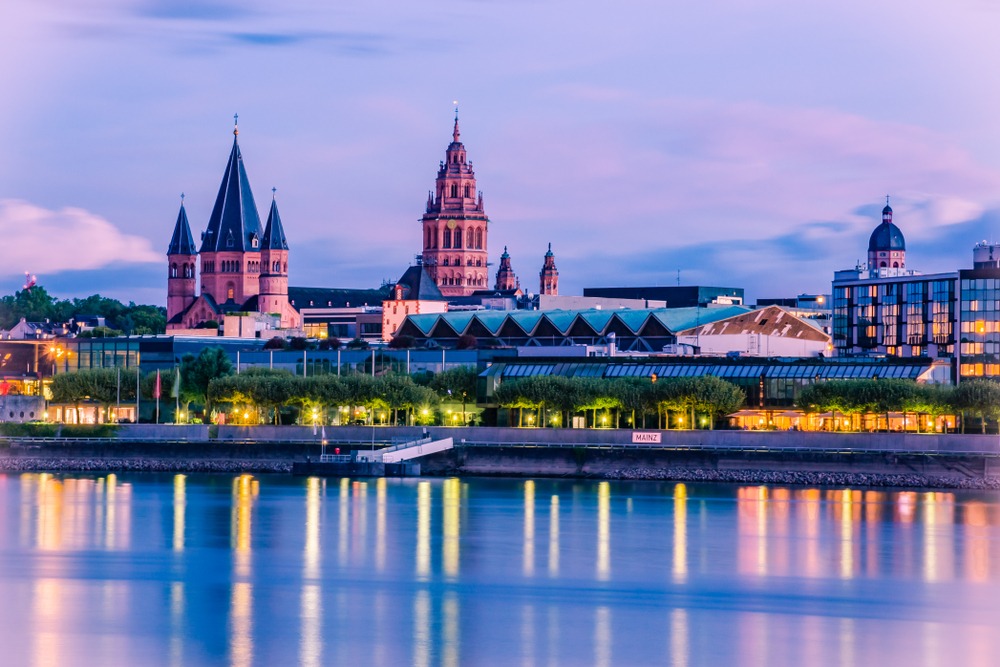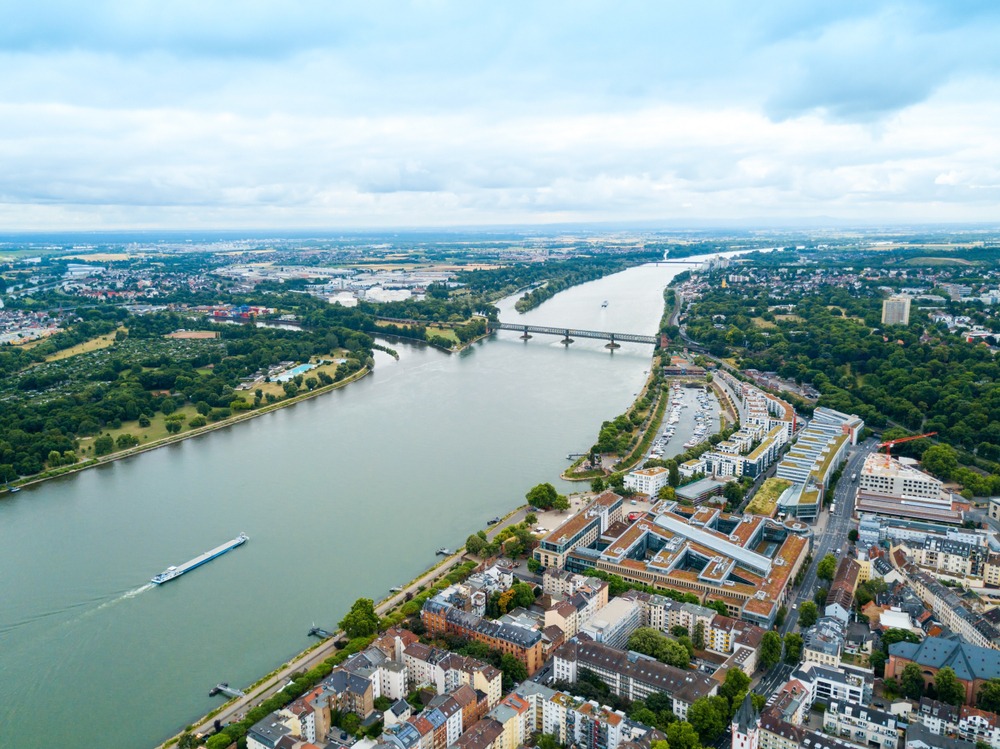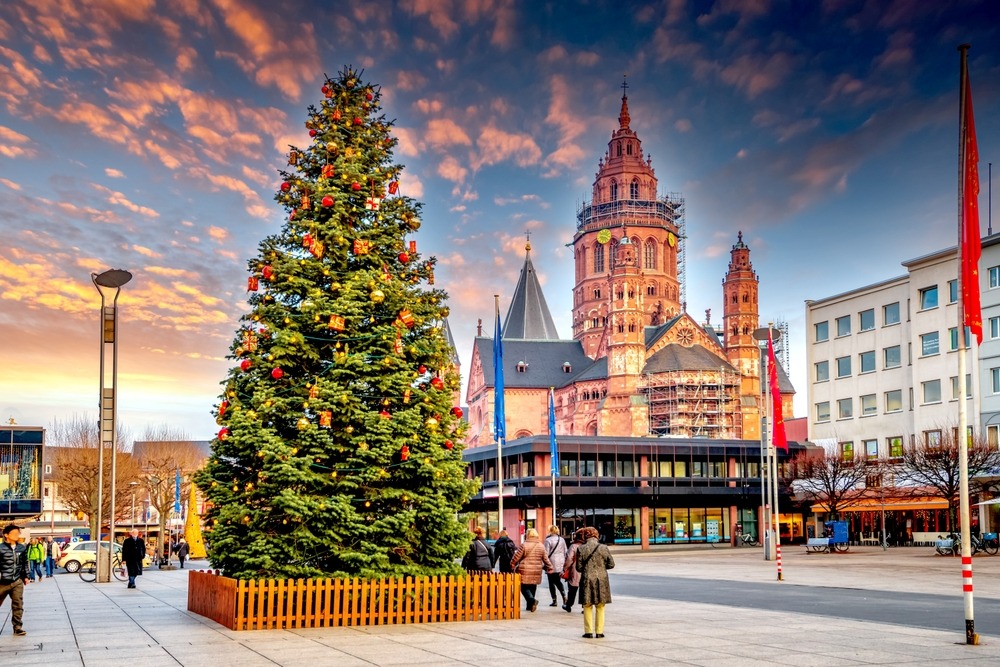The History and Top 25 Attractions of Mainz, Germany
History of Mainz
Mainz, the capital of Rhineland-Palatinate in western Germany, stands as one of Europe’s oldest cities, steeped in over two millennia of continuous history. Positioned strategically on the western bank of the Rhine River at its confluence with the Main, Mainz has long been a center of commerce, religion, scholarship, and culture.
The roots of Mainz reach back to around 13 BCE, when it was established as a Roman military post known as Mogontiacum. Named after a local Celtic deity, Mogons, the settlement quickly developed into a major Roman provincial capital and military stronghold. It became the base for the 22nd Legion and later the 1st Legion, protecting the empire’s northern frontier and fostering civilian life in and around the encampment. The Romans built roads, aqueducts, a theater, and temples, many of which would shape the city’s layout for centuries to come.

With the fall of the Roman Empire in the 5th century, Mainz entered the turbulent era of the early Middle Ages. It became a key center of the Christian Church under Frankish rule, and in the 8th century, the influential Archbishopric of Mainz was established. Mainz soon rose in religious prominence and became known as the Holy See of the Holy Roman Empire. The Archbishop of Mainz was one of the seven Prince-Electors of the Holy Roman Emperor, granting the city not only spiritual influence but also political authority.
The medieval era saw Mainz blossom culturally and economically. It became a member of the Hanseatic League and an important center of learning and printing. The city’s most celebrated figure, Johannes Gutenberg, revolutionized the world in the 15th century by inventing the movable-type printing press here. His invention made possible the mass production of books and the spread of knowledge throughout Europe, igniting the Renaissance and Reformation.
Mainz’s fortunes declined during the Thirty Years’ War and subsequent conflicts, including the French Revolutionary Wars and the Napoleonic era. In the 19th and early 20th centuries, the city was reshaped by Prussian and later German imperial influences. Mainz was heavily bombed during World War II, which destroyed large portions of its historic core.
Postwar reconstruction, however, preserved many of its cultural landmarks while adding modern institutions and infrastructure. Today, Mainz is a vibrant university city, a media hub (home to ZDF, one of Germany’s largest broadcasters), and a capital of wine culture along the Rhine.

Top 25 Attractions in Mainz
-
Mainz Cathedral (Mainzer Dom) – A striking Romanesque cathedral that has dominated the city skyline for over a thousand years, housing the tombs of archbishops and Holy Roman Emperors.
-
Gutenberg Museum – Dedicated to Johannes Gutenberg, this world-renowned museum features original Gutenberg Bibles and early printing presses.
-
St. Stephan’s Church (Stephanskirche) – Known for its breathtaking stained-glass windows created by Marc Chagall, the church is a place of peace and interfaith reflection.
-
Augustinerkirche – A beautiful Baroque church with an opulent interior, once serving as the abbey church for the Augustinian monastery.
-
The Old Town (Altstadt) – A maze of cobblestone streets, timber-framed houses, wine taverns, and charming squares such as Kirschgarten, offering a glimpse into historic Mainz.
-
Roman Theatre – Once one of the largest theaters north of the Alps, this Roman-era site remains partly excavated and accessible for visitors near the central station.
-
The Electoral Palace (Kurfürstliches Schloss) – A splendid Renaissance structure that once housed the prince-electors of Mainz, now used for events and exhibitions.
-
St. Peter’s Church (Peterskirche) – An exquisite Baroque church located in the heart of Mainz, with richly decorated ceilings and a golden altar.
-
Museum of Ancient Seafaring – Situated in a reconstructed Roman warehouse, this museum displays full-scale reconstructions of Roman ships discovered in the Rhine.
-
Iron Tower (Eisenturm) – A medieval city gate once part of the fortifications, now a cultural center hosting exhibitions and art events.
-
Wood Tower (Holzturm) – Another surviving medieval watchtower, located near the riverbank and historically used as a prison.
-
The Rhine Promenade – A scenic walking path along the river, ideal for cycling, walking, or watching passing boats and sunsets.
-
Christuskirche – An impressive Protestant church built in the early 20th century, featuring a domed roof and prominent placement along the Rhine.
-
Fastnachtsbrunnen (Carnival Fountain) – A whimsical fountain filled with 200 figures celebrating Mainz’s famous Carnival tradition.
-
State Theater Mainz (Staatstheater Mainz) – A modern performance venue offering opera, drama, and ballet with both historical and contemporary productions.
-
Naturhistorisches Museum Mainz – The city’s natural history museum with exhibits ranging from regional fossils to wildlife and minerals.
-
Mainz Citadel (Zitadelle Mainz) – A 17th-century fortress perched on Jakobsberg Hill, offering commanding views of the city and historical exhibits.
-
Roman Aqueduct Ruins – Remnants of the Roman engineering system that once supplied the city with fresh water from nearby springs.
-
Kupferbergterrasse and Sekt Cellars – One of Germany’s oldest sparkling wine producers, offering guided tours through underground cellars and tastings.
-
Mainz Carnival Museum (Fastnachtsmuseum) – A colorful tribute to the city’s vibrant and satirical Carnival culture.
-
Botanical Garden of the University of Mainz – A serene escape with thousands of plant species, tropical greenhouses, and themed gardens.
-
State Museum Mainz (Landesmuseum Mainz) – A treasure trove of art and history from prehistory through the Middle Ages to modern times, including Roman artifacts and fine art.
-
Rheingoldhalle and Congress Centrum Mainz – A major venue for conferences and public events, also used for music and cultural performances.
-
Mainz Market (Wochenmarkt) – Held several days a week in the square around the cathedral, this lively market offers local produce, cheeses, flowers, and street food.
-
Weinmarkt and Wine Tastings – Annual wine events and tastings, especially during the Mainz Wine Market festival in the Stadtpark, which celebrates the region’s viticulture heritage.

Of special note is that, like many cities along the Rhine River, Mainz, Germany has yearly Christmas Markets that provide local and independent artists to share their unique and incredible artworks with the world.
Mainz is a city where the past and present blend effortlessly. From Roman ruins and Baroque churches to the birthplace of the printing revolution and a thriving wine culture, it offers layers of discovery for every visitor. Rich in tradition yet youthful in energy, Mainz stands proudly as a cultural beacon along the Rhine.

































